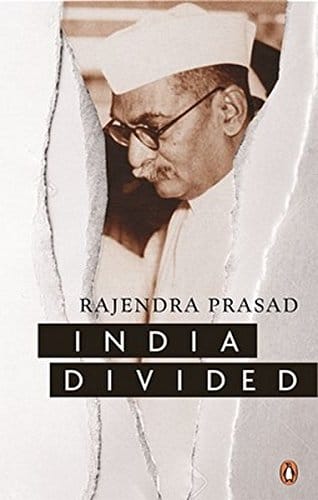WELCOME TO MIDLAND BOOK SHOP!
SHOP FOR
- Contemporary Fiction
- Contemporary Fiction
- Children
- Children
- Comics & Graphic Novels
- Comics & Graphic Novels
- Non-Fiction
- Non-Fiction
- Fiction
- Fiction
Shop No.20, Aurobindo Palace Market, Hauz Khas, Near Church +91 9818282497 | 011 26867121 110016 New Delhi IN
Midland The Book Shop ™
Shop No.20, Aurobindo Palace Market, Hauz Khas, Near Church +91 9818282497 | 011 26867121 New Delhi, IN
+919871604786 https://www.midlandbookshop.com/s/607fe93d7eafcac1f2c73ea4/677cda367903fd013d69b606/without-tag-line-480x480.png" [email protected]9780143414155 60ad045fda44d5f9df84442f India Divided https://www.midlandbookshop.com/s/607fe93d7eafcac1f2c73ea4/60ad0461da44d5f9df844513/9780143414155-us.jpg "The question of the partition of India into Muslim and Hindu zones assumed importance after the All-India Muslim League passed a resolution in its favour in March 1940 in Lahore. Most of India Divided was written in prison and it was published in 1946, a year before India was divided. The book specifically examines the theory that the Hindus and Muslims of India were two nations, and concludes that the solution for the Hindu–Muslim issue should be sought in the formation of a secular state, with cultural autonomy for the different groups that make up the nation. It traces the origins and growth of the Hindu–Muslim conflict, gives the summary of the several schemes for the partition of India which were put forth, and points out the essential ambiguity of the Lahore Resolution. Finally, it deals with the resources of the Muslim-majority states and shows how the suggested scheme of Partition was impracticable, and proposes a new solution to the Hindu–Muslim question. " 9780143414155
in stockINR 479
1 1
Email ID already exists!
Your Current password is incorrect
Password Updated Successfully
Thanks for your Feedback
- Home
- Non-Fiction
- India Divided
India Divided
ISBN: 9780143414155
₹479
₹599 (20% OFF)SIZE GUIDE
Sold By: Hauz Khas - Aurobindo Market
Details
- ISBN: 9780143414155
- Author: Rajendra Prasad
- Publisher: Penguin
- Pages: 584
- Format: Paperback
Book Description
"The question of the partition of India into Muslim and Hindu zones assumed importance after the All-India Muslim League passed a resolution in its favour in March 1940 in Lahore. Most of India Divided was written in prison and it was published in 1946, a year before India was divided. The book specifically examines the theory that the Hindus and Muslims of India were two nations, and concludes that the solution for the Hindu–Muslim issue should be sought in the formation of a secular state, with cultural autonomy for the different groups that make up the nation. It traces the origins and growth of the Hindu–Muslim conflict, gives the summary of the several schemes for the partition of India which were put forth, and points out the essential ambiguity of the Lahore Resolution. Finally, it deals with the resources of the Muslim-majority states and shows how the suggested scheme of Partition was impracticable, and proposes a new solution to the Hindu–Muslim question. "
User reviews
NEWSLETTER
Subscribe to get Email Updates!
Thanks for subscribing.
Your response has been recorded.

India's Iconic & Independent Book Store offering a vast selection of books across a variety of genres Since 1978.
"We Believe In The Power of Books" Our mission is to make books accessible to everyone, and to cultivate a culture of reading and learning. We strive to provide a wide range of books, from classic literature, sci-fi and fantasy, to graphic novels, biographies and self-help books, so that everyone can find something to read.
Whether you’re looking for your next great read, a gift for someone special, or just browsing, Midland is here to make your book-buying experience easy and enjoyable.
We are shipping pan India and across the world.
For Bulk Order / Corporate Gifting
 +91 9818282497 |
+91 9818282497 |  [email protected]
[email protected]
Click To Know More
INFORMATION
ACCOUNT
QUICK LINKS
ADDRESS
Midland Book Shop - Hauz Khas
Shop No.20, Aurobindo Palace Market, Near Church, New Delhi
Shop No.20, Aurobindo Palace Market, Near Church, New Delhi














